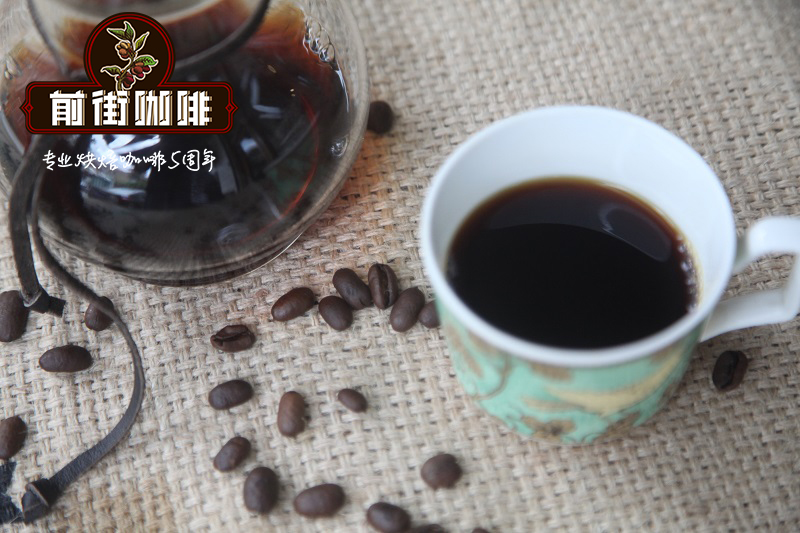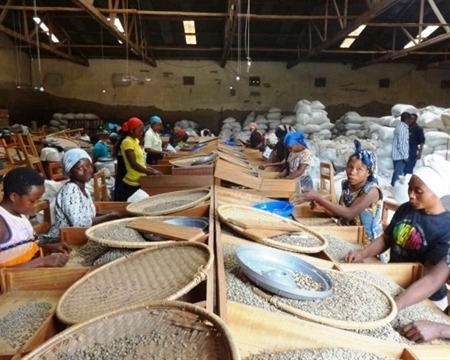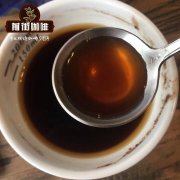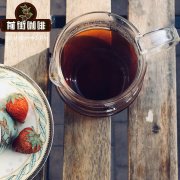Congo Kahondo Kahondo processing plant introduced how to drink Congolese coffee?

Professional coffee knowledge exchange more coffee bean information please follow the coffee workshop (Wechat official account cafe_style)
As the birthplace of coffee, Africa is a land full of game beans, and the continent deserves to produce some of the world's top coffee. African beans have a unique aroma, wild taste, mostly with a touch of sour red wine, such as Ethiopia's "mocha" is particularly wonderful (the two producing areas of Hara and Tijima are dry to treat high-quality mocha beans, such as fruit or wine aromas, is inferior to other coffee), Yega Chuefei coffee beans are also very good. Kenyan varieties are delicious, showing more bright and lively acidity than Arabica coffee beans in other regions. Kenya AA is a very famous top coffee bean.

Lake North Kivu (North Kivu) in Congo has abundant rainfall, high altitude and fertile volcanic soil, making it ideal for growing Arabica coffee (Coffea Arabica). Due to the lack of infrastructure in the region, regardless of roads, vehicles, clean water and reliable electricity, it is difficult to produce boutique coffee. Large colonial coffee plantations have shrunk to micro-farmers, down to an average of only 100 coffee trees. Coffee cherries produced by farmers can only be resold to intermediaries at very low prices, while coffee produced by Congo is often smuggled into neighboring Rwanda or Burundi. Exports in the name of coffee from other countries worsen farmers' incomes.

Nevertheless, the Kahondo washing plant overcomes the problems encountered in coffee production by personally helping farmers improve their planting and invest in local infrastructure. Through such efforts, the quality of coffee has been greatly improved in this season, and farmers are paid more than before.

The harvested cherries are washed and picked in a sink to remove unripe cherries that float on the surface because of their low density; these floating beans are processed into lower-grade coffee. Place ripe cherries on an African elevated bed to dry in the sun for 12 to 15 days until the cherry water content reaches the best humidity. Cherries must be turned timely and consistently to ensure uniform drying and to prevent mildew or decay. The dried cherries are transported to Butembo to be dried, shelled, graded and finally bagged for export.

World-renowned brands are optimistic about the excellent quality of Congolese coffee. Starbucks launched coffee from a single Congolese producing area, and BlueBottle also added Congo to the formula.
Country of production: Congo D.R. Congo
Bean seed: bourbon Bourbon
Producing area: Lake North Kivu, North Kivu
Executive producer: Virunga Coffee, Veronga Coffee Company
Washing plant: Kahondo washing plant Kahondo washing station
Producer: local small farmers
Altitude: 1550-1900 m
Treatment: Natural in the sun

Qianjie Coffee suggests using 86-88 to brew Congolese coffee to retain its mellow taste and wild feeling.
Qianjie coffee: Guangzhou bakery, the store is small but a variety of beans, you can find a variety of unknown beans, but also provide online store services. Https://shop104210103.taobao.com
Important Notice :
前街咖啡 FrontStreet Coffee has moved to new addredd:
FrontStreet Coffee Address: 315,Donghua East Road,GuangZhou
Tel:020 38364473
- Prev

What are the characteristics of Congolese coffee? does the Congolese Veronga Coffee Company recommend Congolese coffee?
Professional coffee knowledge exchange more coffee bean information please follow the coffee workshop (Wechat official account cafe_style) mention Africa, people's first impressions are: desert, drought, tribe, poverty, mystery and so on. Because of its climatic environment, it has become a paradise for the growth of coffee trees. The world's first coffee tree was found in the Horn of Africa. Local indigenous tribes often use coffee
- Next

Introduction to Cloud Manor in Antigua Coffee producing area of Guatemala _ Source of Antigua Coffee Flavor
Professional coffee knowledge exchange more coffee bean information please pay attention to the coffee workshop (Wechat official account cafe_style) Guatemala is located in the Central American isthmus, the territory of many volcanic mountains and plateaus, the production of high-quality Central American high-altitude very hard coffee beans, is the ninth largest producer of coffee beans in the world. Coffee from five volcanic and three non-volcanic producing areas is very unique and mainly produced.
Related
- Detailed explanation of Jadeite planting Land in Panamanian Jadeite Manor introduction to the grading system of Jadeite competitive bidding, Red bid, Green bid and Rose Summer
- Story of Coffee planting in Brenka region of Costa Rica Stonehenge Manor anaerobic heavy honey treatment of flavor mouth
- What's on the barrel of Blue Mountain Coffee beans?
- Can American coffee also pull flowers? How to use hot American style to pull out a good-looking pattern?
- Can you make a cold extract with coffee beans? What is the right proportion for cold-extracted coffee formula?
- Indonesian PWN Gold Mandrine Coffee Origin Features Flavor How to Chong? Mandolin coffee is American.
- A brief introduction to the flavor characteristics of Brazilian yellow bourbon coffee beans
- What is the effect of different water quality on the flavor of cold-extracted coffee? What kind of water is best for brewing coffee?
- Why do you think of Rose Summer whenever you mention Panamanian coffee?
- Introduction to the characteristics of authentic blue mountain coffee bean producing areas? What is the CIB Coffee Authority in Jamaica?

